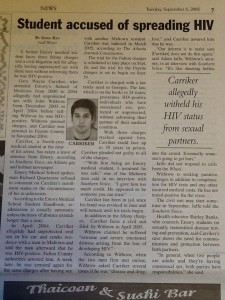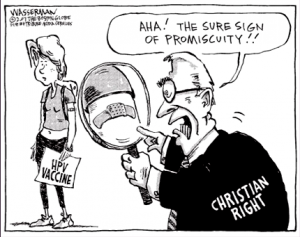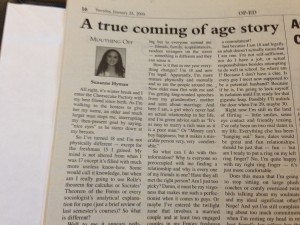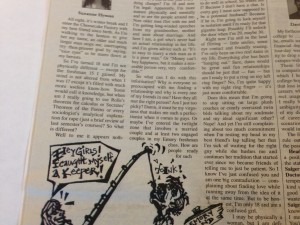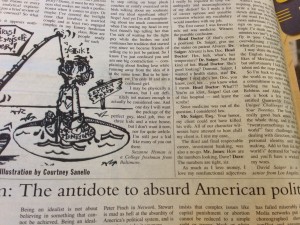In the United States, at the beginning of the HIV/AIDS epidemic, mostly gay men were identified as having high risk for this disease. No one really thought about women or heterosexual couples. But eventually women were actually found out to being much more susceptible to HIV/AIDS due to biological conditions and social conditions. Women account for almost half of the 40 million people living with HIV now [3]. The proportion of women’s HIV cases has tripled from 8% to 27% since 1985 [2].
Women face many challenges that can make them more susceptible to HIV. For one, especially in developing countries, some gender inequalities lead to certain behaviors that can lead contracting HIV. In some cultures, women are not free to refuse sex or insist on using condoms. In some of these cultures, men believe they have power over women and do not let them have a say in the situation [2]. Also in some of these cultures, women might not have the same access to education that men have and may not even be aware of the methods of preventions and consequences. The risk of sexual violence can also be extremely high in some places, possibly poorer environments. According to the Higgins article, women that were more likely to get HIV were Black or Latina and lived in very poor sections of the United States [1]. The culture and living conditions plays a major role in disease transmission. Access to education is low in certain areas and can directly result in more people contracting diseases such as HIV.
In addition to the social issues women face, they also have biological differences that make them more susceptible to diseases than men. Women are exposed to infectious fluids longer during sex [1]. Their cells lining of the cervix may also be more vulnerable to HIV [1]. There has been a lot of research proving this. For example, in the Official Journal of the International AIDS Society, there was a article published in 2008 titled, Vulnerability of women in southern Africa to infection with HIV: biological determinants and priority health sector interventions, the determined that bacterial vaginosis is associated with HIV [4]. This is something women have no control over but have to take the necessary precautions. There is no other choice.
People are aware of these issues, and there are many things being done about this. The National Institute of Allergy and Infectious Diseases (NIAID) has placed an emphasis on HIV research [2]. They fund and sponsor research around the world. One example of a type of research is developing a mircobicide gel that women could easily apply and lower the chance of infection. Efforts like these will slowly contribute to the decrease of infections. But it is difficult to lower the risk of HIV infection by women compared to men still due to all the social and biological factors. Women are most in danger of contracting HIV due to gender disparities, poverty, culture and sexual norms, lack of education or sexual violence.
[1] Rethinking Gender, Heterosexual Men, and Women’s Vulnerability to HIV/AIDS
[2] http://aids.about.com/od/womensresources/a/womenimpact.htm
[3] http://stke.sciencemag.org/cgi/content/abstract/sci;308/5728/1582
[4] http://journals.lww.com/aidsonline/Abstract/2008/12004/Vulnerability_of_women_in_southern_Africa_to.4.aspx

